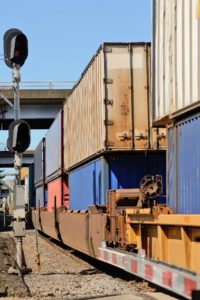
Shippers and trucking companies alike could learn a few things from the ways rail companies, especially Union Pacific (UP), are implementing real-time, big data technology to overcome supply chain obstacles.
Union Pacific had several problems to address, and technology was the only solution.
UP’s Problems
Freight rail companies like UP face unique problems. There are 140,000 miles of railroad tracks across the U.S. that move 5 million tons of goods a day. Maintaining visibility into train and track conditions across this vast, high-traffic network is extremely difficult.
Adding to the challenge is the fact that most freight rail cars don’t have electric power. This means that RFID technology, which has been used by passenger trains since the early 90s, is not a viable means of visibility into train location.
The lack of electric power also means a lack of knowledge into train and track conditions. Heavy-duty trucks have the capability to utilize technology which can notify a carrier of truck malfunctions so that a crash or delay can be avoided as best as possible. Freight train cars do not have this capability.
The heart of the problem UP needed to fix was train derailments. When a train derails, it risks lives, causes delays and is costly. Derailments were hard to avoid due to low visibility and became a significant supply chain disruption for them and their customers.
UP’s Solutions
Given the rail car limitations UP faced, they deployed infrared sensors and small microphones at 20-mile intervals along frequently traveled lines. This technology provides real-time insight into equipment conditions. The data collected by track-side sensors is then sent to custom-built software that determines the best course of action should a problem arise.
Infrared sensors detect temperature levels on the track and in the wheels of the train. Microphones record and analyze acoustic signatures of wheels and bearings to detect possible malfunctions. Together, they provide a comprehensive view of wheel impact and overall train and track performance.
The custom algorithms accompanying their newest sensor technology turn this data into information. Within five minutes, a rail conductor can know if there’s a problem with their train and know whether to simply slow the train down to avoid a derailment or to stop the train altogether.
The Benefits
The result of UP’s technological investment is astounding. Union Pacific has reduced train derailments by 80%, reducing supply chain costs and increasing safety substantially. The company has decided to share it with the rest of the industry to reduce derailments everywhere.
This investment in technology has worked so well, UP has plans to implement more real-time data gathering techniques in the near future – likely moving on to video cameras for information on vibration, pressure and other safety measures.
Shippers and other carriers could learn a lot from this project. While freight rail companies may not be the most technologically savvy companies in the world, they are quickly and efficiently tackling some of their biggest obstacles with smart investments in technology.
Source: RTInsights
Request Free Logistics Opportunity Assessment
Keep reading:
- New Technology is Providing New Forms of Supply Chain Visibility
- Why Warehouse Technology is the First Step in Fast Shipping
- A Fully Automated Transportation Industry is Closer Than You Think

